- Document History
- Subscribe to RSS Feed
- Mark as New
- Mark as Read
- Bookmark
- Subscribe
- Printer Friendly Page
- Report to a Moderator
- Subscribe to RSS Feed
- Mark as New
- Mark as Read
- Bookmark
- Subscribe
- Printer Friendly Page
- Report to a Moderator
Università degli studi di Salerno (Italy)
Team Members:Emanuele Bezzeccheri, Aniello Falco, Francesco Malaspina
Faculty Advisors: Prof. Antonio Pietrosanto, Dr. Alfredo Paolillo
Email Address:bibani@gmail.com
Project Information
Title: An ATE for common emitter BJT characterization
Description:
The aim of this software is providing, via a specified set-up, an automatic test equipment able to characterize a Bipolar Junction Transistor in open emitter configuration. Characterization had to be performed via current control using only a voltage generator
Products:
- LabView student 10.0
- A PC equipped with a GPIB 488.2 interface .
- A Tektronix TDS540 Oscilloscope.
- An Agilent E3631 Power Supply.
- A Bipolar Junction Transistor to characterize.
- 4 alimentation cables.
- 4 probes with flying leads.
- 2 appropriate-dimensioned resistance, as described in user manual.
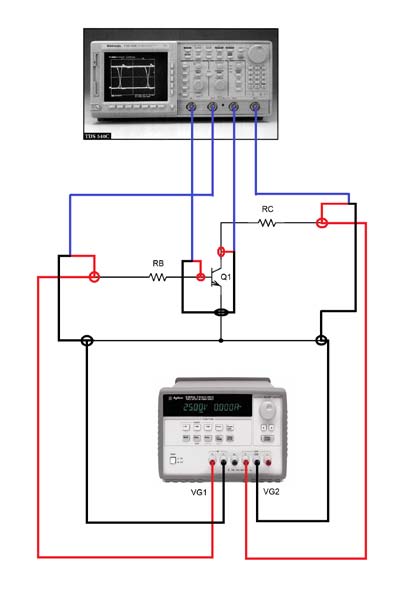
The Challenge:
Creating an automatic test equipment able to characterize BJT via current control. We had to find a way to use our voltage generator to guarantee stable base current.
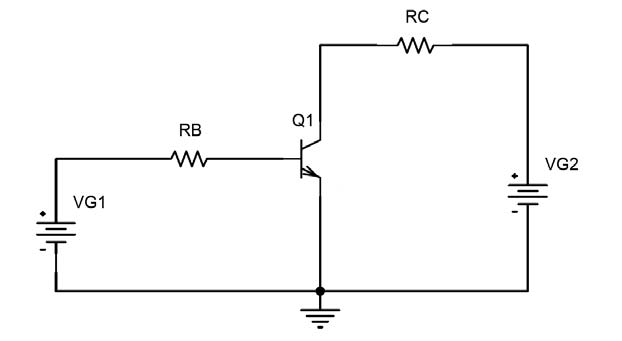
The Solution:
It has been previously stated that an IB parameterization of the output curves is needed. It’s clear that the circuital solution adopted can’t provide a direct base current control that would make the issue of simple solution. Therefore a base current-control iterative algorithm is adopted. Indeed, different attempts have to be did before finding the right value of VG1 for the requested IB current.
The algorithm (Figure 9) is inspired to the bisection method:
1. An initial chance value of VG1 is tried. This value is initialized by a Kirchhoff voltage law in the input mesh hypothesizing a given VBE voltage, for instance VBE=0.66V (i.e. VG1chance = RBIB + VBEhyp). Note that the IB current used in the equation is the desired current.
2. The effective IB current is measured. If this current is greater than the desired IB, VG1 is decremented of a fixed step (i.e. VG1step). On the other hand, if the measured current is smaller, VG1 is incremented.
3. Anytime that the measured current came across the desired current, the step is divided by two and the process is keeping on.
4. The convergence is reached when the measured current belongs to an error range chosen around the desired IB.

Details on the implementation can be found in the programmer’s manual.
For the estimation of the parameters of interests (i.e IS, HFE and VA) different approaches are used:
- For the HFE evaluation, equation (4) is employed. A double mean is calculated above both IC-VCE curves and IB values.
- For the IS evaluation, equation (5) is employed. Also here a mean process is contemplated.
- For the evaluation of the Early voltage VA, a linear interpolation along the IC-VCE curves is did and the intercept (that represents VA) is estimated. Aldo various mean process are used here
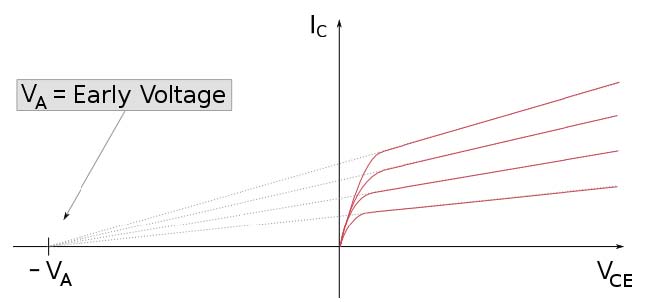
This solution has been implemented and integrated in a LabVIEW software. Here's a complete screenshot.
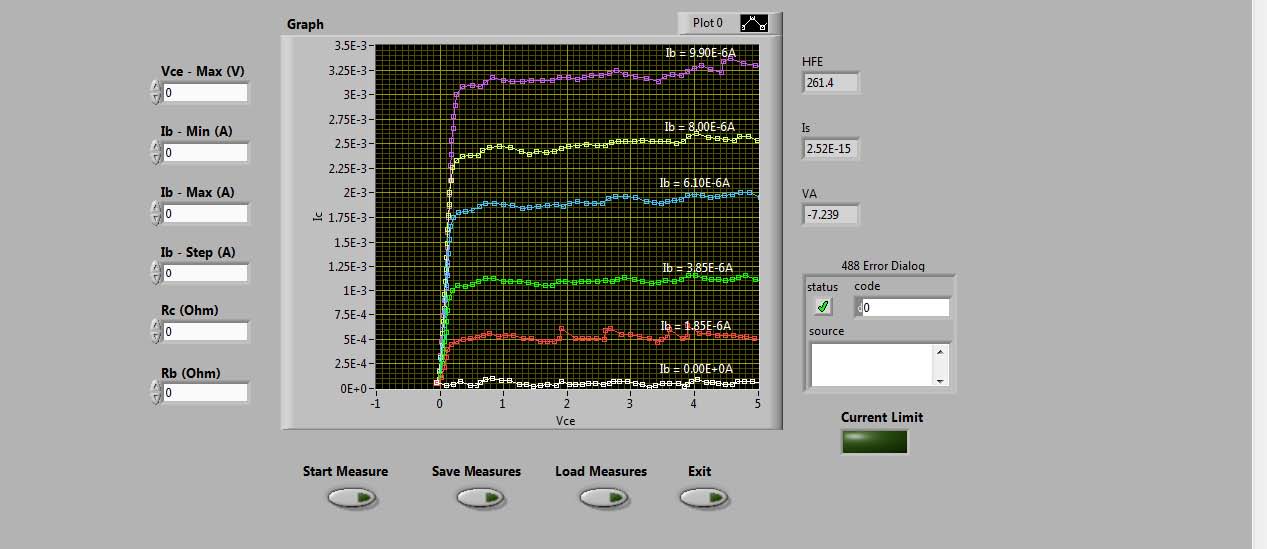
Flux diagram scheme

For further details, attached to this form you can find User's manual and Programmer's manual.
Measurement Uncertainty
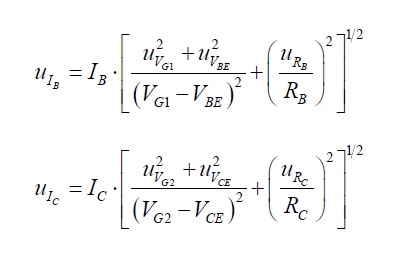
Note that the uncertainty on a resistance can be experimental characterized taking the standard deviation of statistical data obtained by successive measurements, or can be valued, hypothesizing an uniform distribution of the named data, as the ratio of the resistance error (given by the resistance’s producer) and sqrt(3).
The uncertainty on the voltage measurement can be obtained as the ratio between the Accuracy of the measure (i.e. maximum error that can be committed, given by the oscilloscope) and sqrt(3), also hypothesizing an uniform probability density function of the statistical voltage data.
- Mark as Read
- Mark as New
- Bookmark
- Permalink
- Report to a Moderator
Hello there,
Thank you so much for your project submission into the NI LabVIEW Student Design Competition. It's great to see your enthusiasm for NI LabVIEW! Make sure you share your project URL with your peers and faculty so you can collect votes for your project and win. Collecting the most "likes" gives you the opportunity to win cash prizes for your project submission. If you or your friends have any questions about how to go about "voting" for your project, tell them to read this brief document (https://forums.ni.com/t5/Student-Projects/How-to-Vote-for-LabVIEW-Student-Design-Projects-doc/ta-p/3...). You have until July 15, 2011 to collect votes!
I'm curious to know, what's your favorite part about using LabVIEW and how did you hear about the competition? Great work!!
Good Luck, Liz in Austin, TX.
